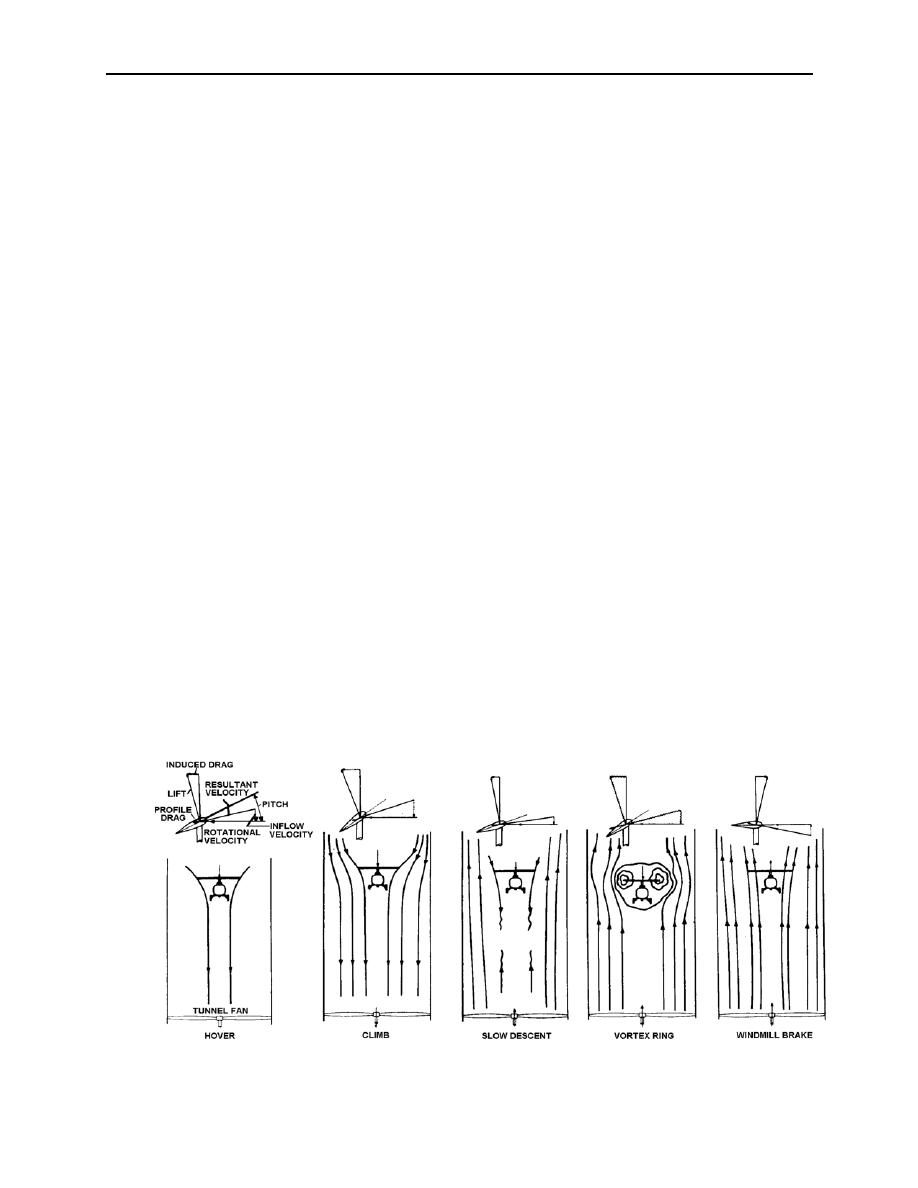 |
|||
|
|
|||
|
|
|||
| ||||||||||
|
|  HELICOPTER AERODYNAMICS WORKBOOK
CHAPTER 5
4. High density altitude
5. Low temperature
6. Turbulent air
Compressibility effects will vanish if blade pitch is decreased. There are similarities in
critical conditions for retreating blade stall and compressibility, but one difference must be
appreciated. Compressibility occurs at high rotor rpm, while blade stall occurs at low rotor rpm.
Recovery technique is similar for both, with the exception of rpm control.
VORTEX RING STATE
Vortex ring state (power settling) is an uncontrolled rate of descent caused by the
helicopter rotor encountering disturbed air as it settles into its own downwash. This condition is
based on the pilot's observation that even though the aircraft may have plenty of engine power,
the aircraft continues to sink rapidly. This condition may occur in powered descending flight at
low airspeeds while out of ground effect.
The vortex ring state is encountered when the rate of descent approaches or equals the
induced flow rate (figure 5-4).
Based on wind tunnel and flight tests, flight in the vortex ring state begins at induced
velocity, peaks at induced velocity, and disappears at 1 times the induced velocity.
Depending on their disk loading, various helicopters enter this phenomenon at a descent rate
of 300 to 600 feet per minute and must exceed 1500 to 3000 feet per minute to get clear of it.
Staying in this state for any length of time depends on maintaining a nearly vertical flight path.
There is some evidence a glide slope of about 70 is worse than a true 90 descent. Approaches
with glide slopes less than about 50 with forward speeds between 15 and 30 knots will
introduce enough fresh air into the rotor system to blow the tip vortices away from the rotor and
free it from the clutches of vortex ring state.
Figure 5-4
FLIGHT PHENOMENA 5-5
|
|
Privacy Statement - Press Release - Copyright Information. - Contact Us |